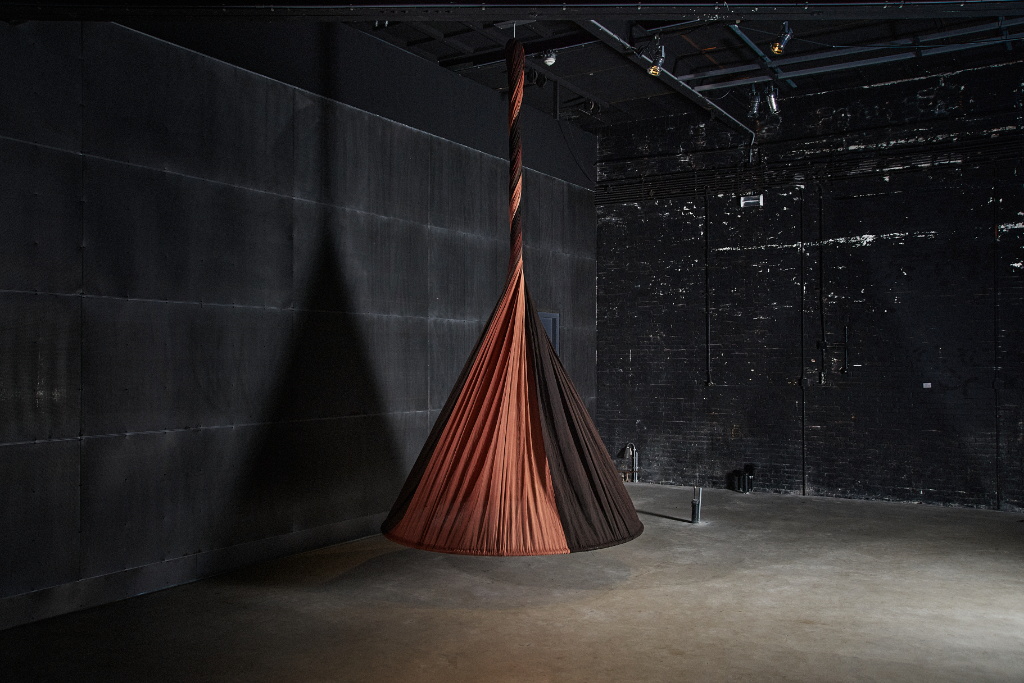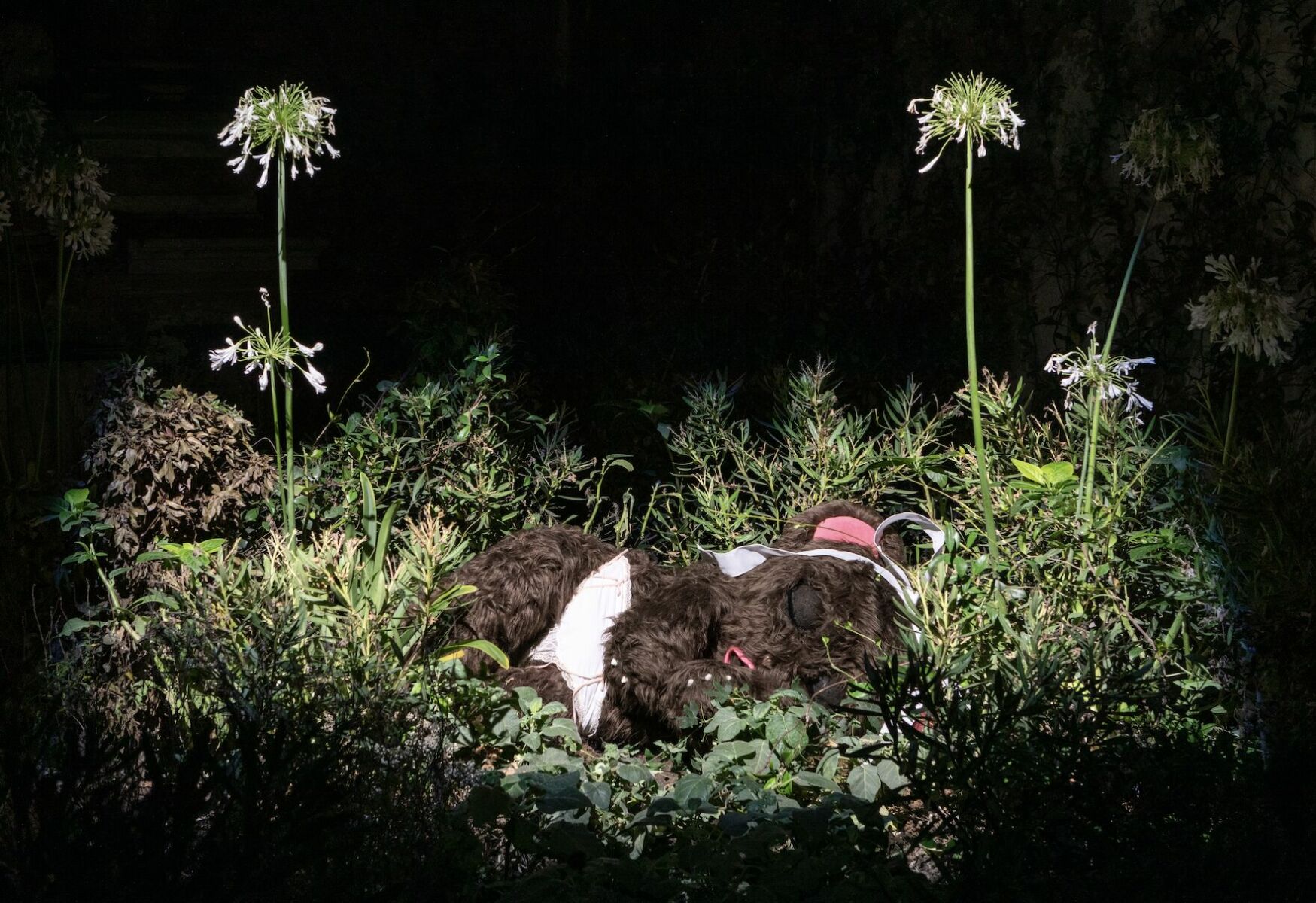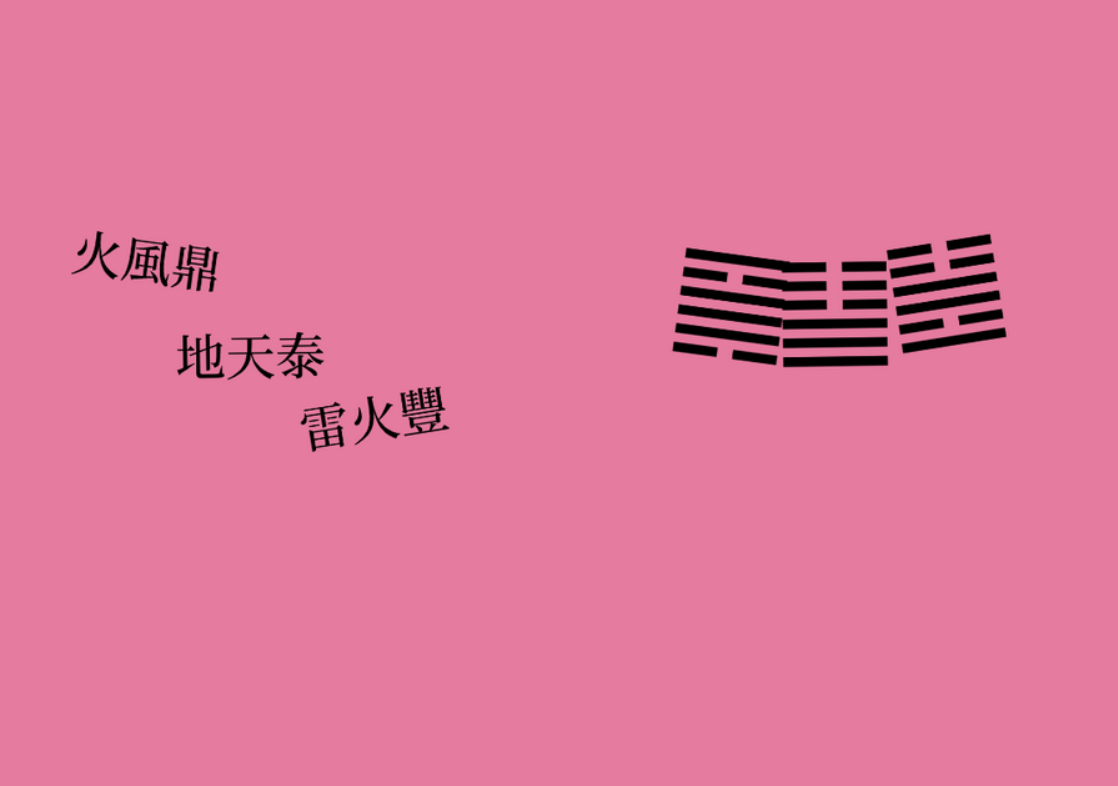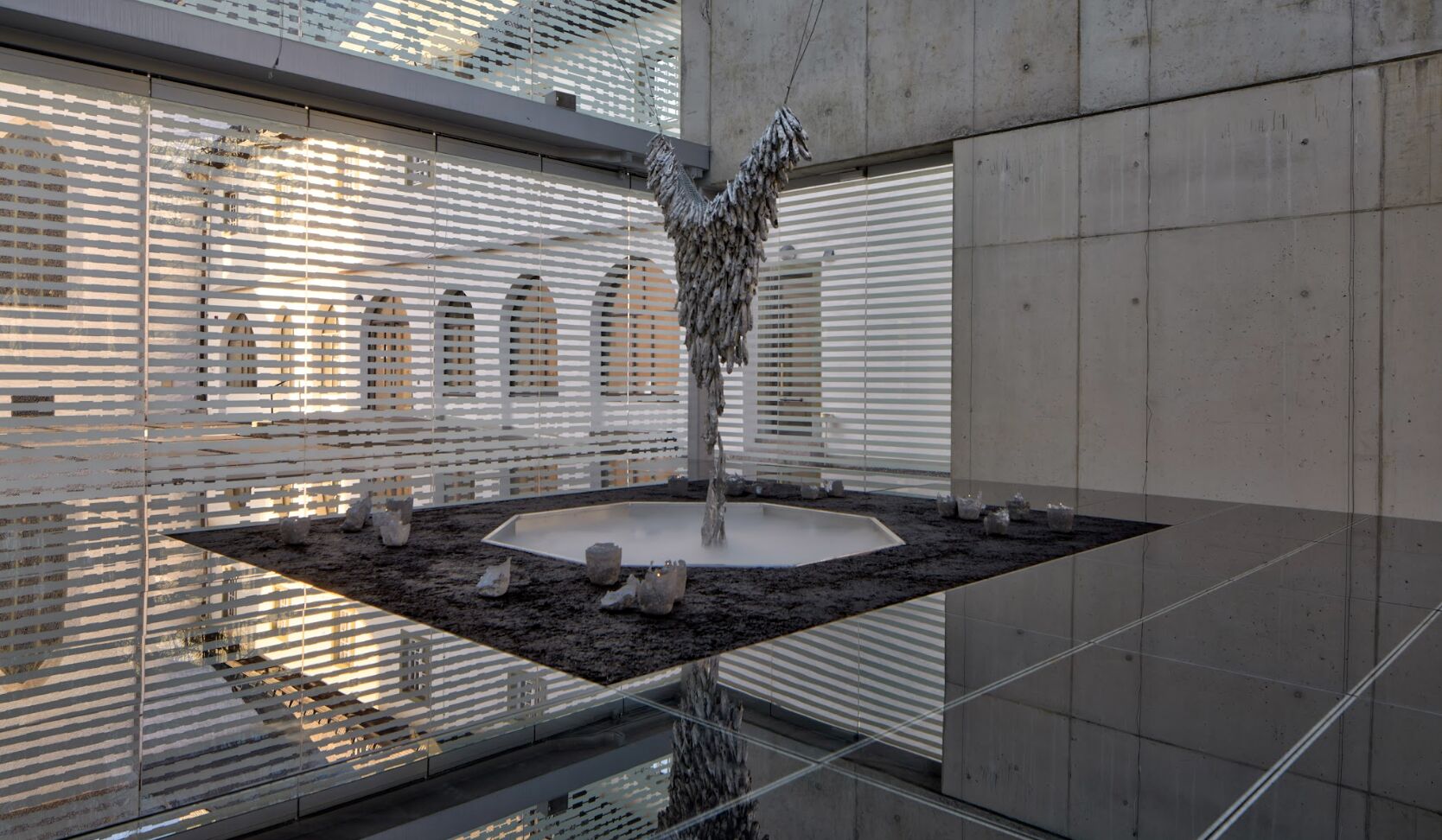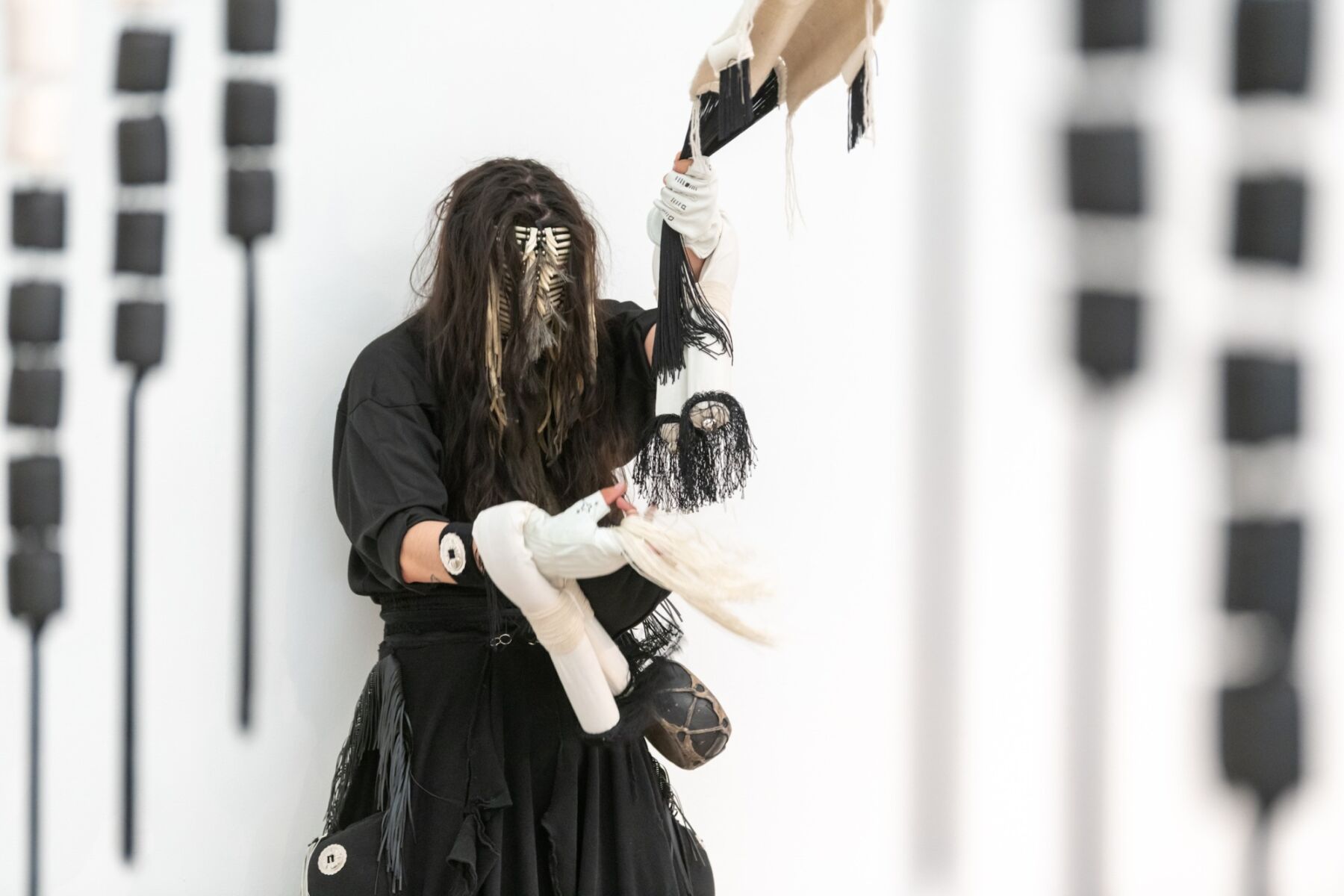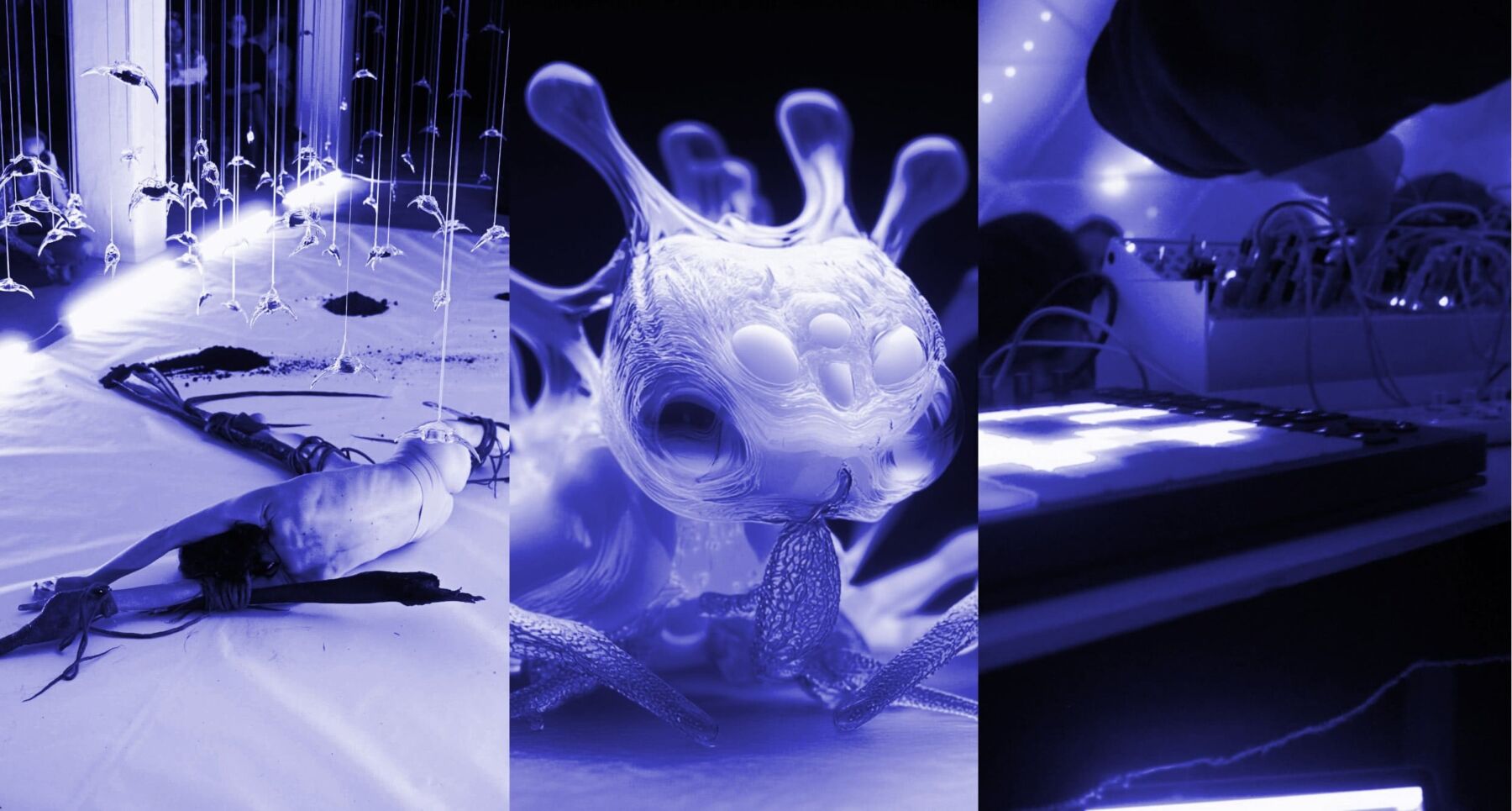Text by CLOT Magazine
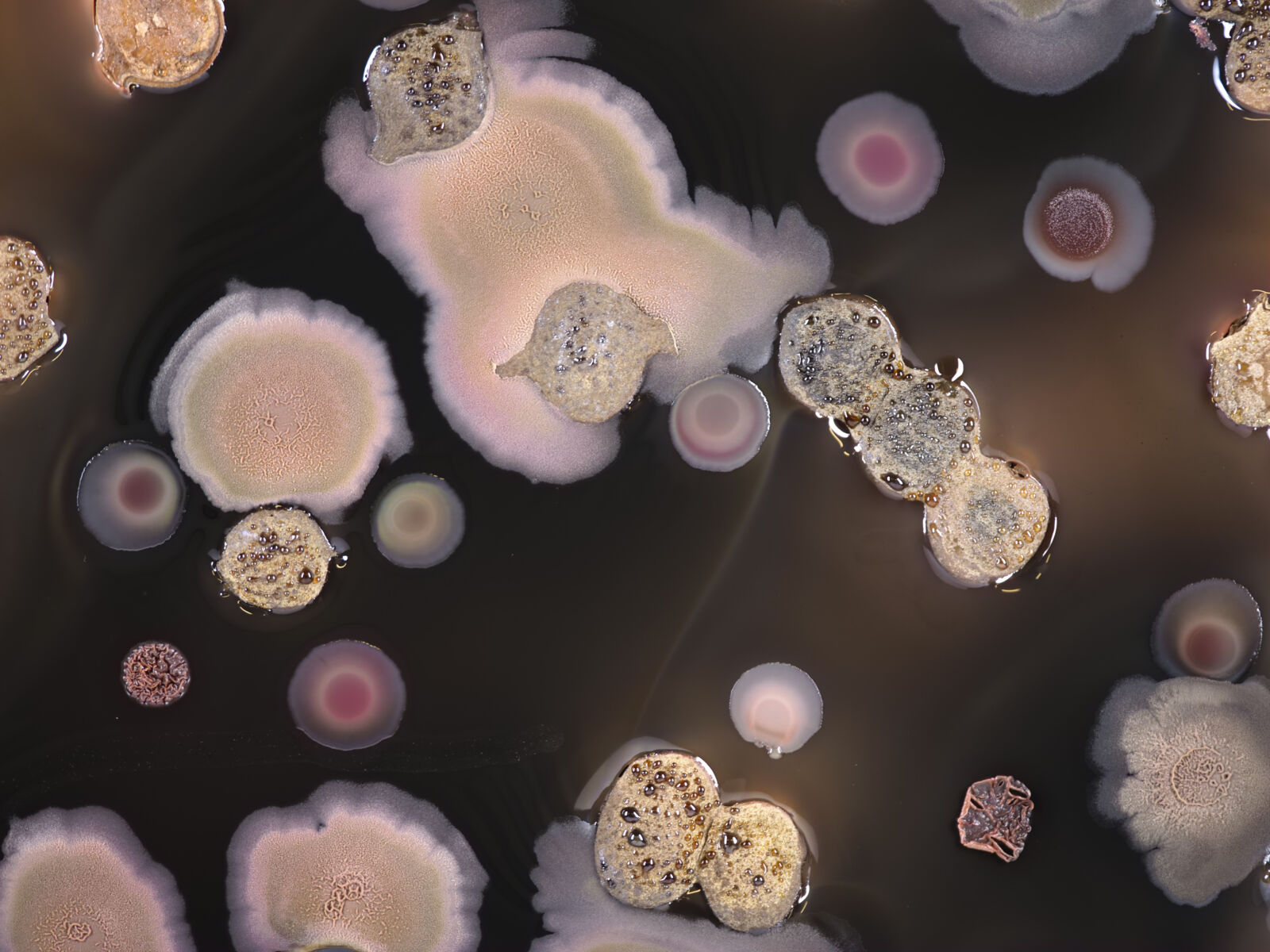
Fermenting Textiles with Adama Séré, Laurence Douny, Regine Hengge, Pauline Agustoni, and Satomi Minoshima is a research project and exhibition at Art Laboratory Berlin that connects anthropology, microbiology, and art.
Curators Regine Rapp and Christian de Lutz explain that cross-cultural research methods play a key role in the exhibition: Anthropologist Laurence Douny has worked with colleague Adama Séré and has documented the Vouwo mud dyeing process in Burkina Faso, which blends soils of varied origins, iron ore, and plant materials.
Microbiologist Regine Hengge and her PhD student José I. Hernández Lobato have explored the complex interactions between soil bacteria, plants, and fabrics in dyeing, visually re-enacting these in the exhibition. Pauline Agustoni and Satomi Minoshima’s Craft Portrait: Dorozome project highlights traditional fabric dyeing in Amami Oshima, Japan. In this method, silk threads, interwoven with cotton for kimono production, are dyed in tree bark extract before repeated mud baths trigger complex chemical reactions that yield deep brown and black tones.
The group exhibition Fermenting Textiles embodies a rich interplay of multi-national, multi- and trans-disciplinary collaboration, echoing the intricate multi-species interactions at the heart of mud dyeing. This process, deeply rooted in nature, resonates with the Japanese aesthetic philosophy of Wabi-Sabi, which finds beauty in imperfection and transience. In textile art, this translates to appreciating natural irregularities and the handmade process, which aligns with the organic nature of fermented textiles.
Fermenting Textiles runs from May 17 to July 6 at Art Laboratory Berlin and is also part of the matter FESTIVAL 2025.

